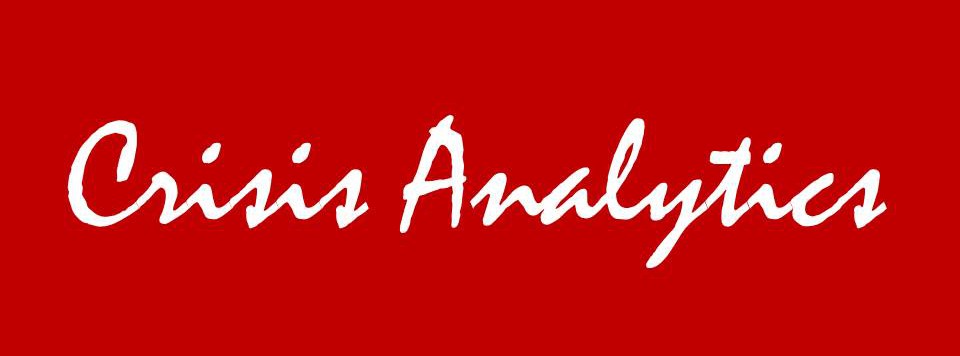
When Elton John wrote the song “Sorry seems to be the hardest word” probably he didn’t have in mind a CEO trying to find the right words to apologize. However, Elton John’s song describes the agony and the psychological situation that a CEO finds himself/herself during a crisis. During 2015 several CEO’s were obliged to express an apology to their customers and stakeholders as a result of failures and misconduct of their companies.
The intention of this article is not to criticize whatsoever the practice of the organizations but to demonstrate the importance and the value of a sincere apology.
You may find below some of these apologies that CEO’s expressed in 2015:
In September 2015, the former CEO of Volkswagen AG, Martin Winterkorn, apologized for the automaker having installed software in its diesel cars to allow the vehicles to pass emissions tests by decreasing emissions when the vehicle detected it was undergoing testing but otherwise pollute at amounts well beyond legally allowed limits. Winterkorn resigned from Volkswagen on 23 September 2015, several days after an emissions cheating scandal was revealedIt was definitely a difficult year for the German automaker.
NVIDIA’s CEO apologized for the GTX 970 memory controversy however he expressed his annoyance saying that “Instead of being excited that we invented a way to increase the memory of [the card], some were disappointed that we didn’t better describe the segmented nature of the architecture for that last 1GB of memory.”
The Keurig Green Mountain CEO apologized for the company’s decision to use DRM in new coffee maker to lock out refill market but his apology was not received by all media in a positive way.
Peter Fankhauser, Thomas Cook CEO, said about the death of two children at the Louis Corcyra Beach Hotel, in Corfu, in October 2006: “It took us nine years to correct the mistakes of the past and to do what everyone would have expected of us; treat the family with the respect and empathy they deserve.”
Lululemon’s founder and former CEO Chip Wilson took responsibility for the fat-shaming comments he made in a 2013 television interview.
The CEO of Takata Corp., the Japanese airbag maker at the centre of a defect scandal that has resulted in recalls of more than 33.8 million vehicles apologized to “everyone” over the scandal. Shigehisa Takada apologized to shareholders at their annual meeting. He then faced media questions, bowing in apology both before and after the news conference. “We apologize deeply for the great amount of concern and inconvenience we have caused to everyone,” he said.
The CEOs of Whole Foods apologized for overcharging customers and offering free food to people in return. Investigators found Whole Foods locations in New York City “routinely overstated” the weight of pre-packaged contents and overcharged customers, according to an announcement by the city’s Department of Consumer Affairs. “Straight up, we made some mistakes. We want to own that and tell you what we’re doing about it,” Walter Robb, co-CEO of Whole Foods Market said in a video that Whole Foods published.
The top executive of the Napa Valley Wine Train contacted a predominately African-American women’s book club and apologized for the removal of 11 of its members from one of its trains after several passengers complained the group’s loudness was negatively impacting their experience. “The Napa Valley Wine Train was 100 percent wrong in its handling of this issue,” said wine train chief executive officer Anthony “Tony” Giaccio. “We accept full responsibility for our failures and for the chain of events that led to this regrettable treatment of our guests.”
The merger between United and Continental airlines appears to be hitting the seven-year itch a few years early, as new United CEO Oscar Munoz began his tenure acknowledging the mega-merger may not have been such a good idea after all. United began its regrets tour on the day of the official fifth anniversary of the creation of United Continental Holdings – by taking out ads in eight newspapers around the country. The ads feature Munoz apologizing for failing to meet customer expectations and vowing to improve. “This integration has been rocky. Period,” he tells the WSJ. “We just have to do that public mea culpa… The experience of our customers has not been what we want it to be.”
The chief executive of Reddit has apologized to its community of users for actions that led to an embarrassing revolt which took down some of the social bookmarking site’s largest communities, particularly video gaming forums that drive a good deal of the site’s traffic. “We screwed up,” Ellen Pao said today. “Not just on July 2 but also over the past several years.”
Konami apologized to fans for causing anxiety about its games and how they do business especially in the consoles segment. The rumours of the departure of the legendary Creative Director Hideo Kojima, the cancellation of the anticipated Silent Hills and the appointment of a new, mobile-centric CEO, provoked speculations and anxiety among Konami’s stakeholders.
HSBC CEO Stuart Gulliver has issued a statement offering his “sincerest apologies” after the bank was accused of helping clients conceal their identities to avoid paying taxes on deposits. The apology was printed in British newspaper adverts. The bank’s Swiss private banking arm has been accused of knowingly aiding thousands of individuals evade taxes and break other financial laws. “We have absolutely no appetite to do business with clients who are evading their taxes or who fail to meet our financial crime compliance standards,” Gulliver said.
Twitter CEO Jack Dorsey apologized to developers for past years practice. In reference to the years when Twitter first courted developers, only to then cut off certain features as it grew and tried to find its own business and platform feet, Dorsey said: “Our relationship with developers got confusing, unpredictable. We want to come to you today and apologize for the confusion.”
The CEO of Office Depot has apologized for a store’s refusal to print a pro-life flier. The office supply store received complaints of religious discrimination from customers after its rejection of the flier. “We sincerely apologize to Ms. Goldstein for her experience and our initial reaction was not at all related to her religious beliefs. We invite her to return to Office Depot if she still wishes to print the flier,” Roland Smith, chairman and chief executive of Office Depot, said in a statement.
The opinions expressed in this article are those of the author, and they do not reflect in any way those of his various affiliations.











